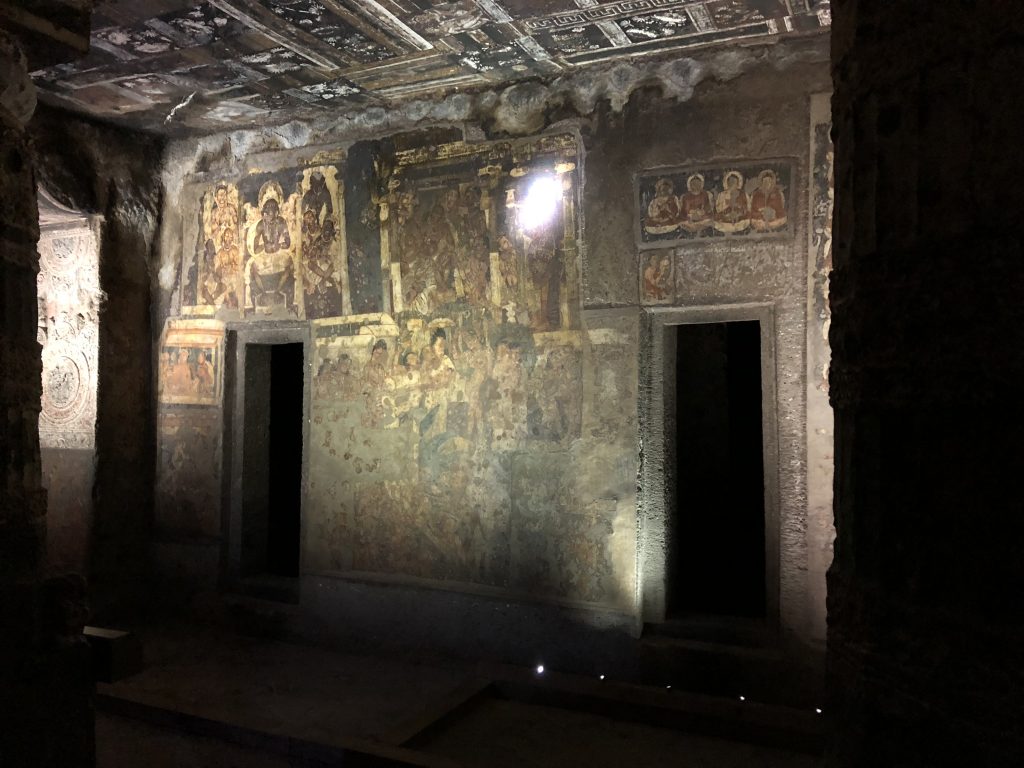It had been about five years since I visited Ajanta, one of the oldest surviving complexes of rock-cut caves carved into the hillside. Apart from ongoing restoration work by the Archaeological Survey of India, little had changed, including the bright and sunny, humid weather and the understandably large crowds that came from all over India and the world to see these stone monuments, which are broadly dated from the 2nd century BCE to 6th century CE. Like many holy sites, large crowds need to be taken in stride as a teacher in patience and understanding, since I was only one pilgrim among many who had the exact same intentions as me.
In any case, all noise and chatter inevitably falls into hushed, reverent silence upon entering the larger or well-preserved of the caves. One of these mountain monasteries is Cave 2, one of the younger community monasteries that were very clearly a community, if not imperially-sponsored, effort.
The cave follows that of the vihara layout, along with Caves 4, 6, 16, and 17: with a stately verandah, an outer cloister that seemed to double as a circumambulation pathway while leading to individual chapels or cells for monks’ practice, and a threshold at the far end of the large assembly hall. Beyond the pillars is a majestic image of the Buddha, just beyond one of the most beautiful, circular ceiling mosaics. The cells are equally haunting, for these are among the earliest, most ancient, spaces of true spiritual practice that survive, since the original dwellings of the Buddha’s day were all made of straw or wood and intentionally temporary.
I knelt behind the pillars, first joining my palms to the Buddha image beyond the threshold before reaching for my phone for the more mundane objective of taking a few photos. Cave 2 was special to me. The threshold acted like a spiritual beckoning, providing a glimpse of the enlightened being beyond the holy of holies. How did the long-gone pilgrims and monks of old cross that threshold and pay reverence to the teachings that sculpture represented? How did they make offerings? How did they prostrate and chant? Was I even asking the right questions; the idea of past generations, of my spiritual ancestors on the Indian subcontinent, touching the untouchable and coming physically close to the unknowable? Even the Buddha hesitated to teach after attaining enlightenment, and he was convinced to go forth into the world not only because of his great compassion, but also because of some encouragement from Brahma, who told him that at least some human beings would understand.
So here he is. And here we are.
This letter is part of a series of the Ajanta Caves, which I visited during the 6th International Buddhist Conclave from 23-26 August 2018, which was organized by the Indian Ministry of Tourism.


